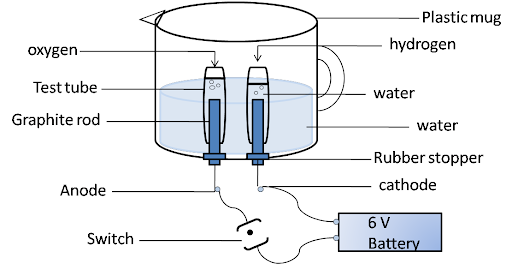Science Class 10 Chapter 1 Questions and Answers - Free PDF Download
NCERT Solutions For Class 10 Science Chapter 1 Chemical Reactions and Equations - 2025-26
FAQs on NCERT Solutions For Class 10 Science Chapter 1 Chemical Reactions and Equations - 2025-26
1. What is the correct method, as per NCERT solutions, for answering why a magnesium ribbon must be cleaned before burning in the air?
The NCERT solution explains this in two steps. First, magnesium is a highly reactive metal that reacts with oxygen in the air. Second, this reaction forms a stable, protective layer of magnesium oxide (MgO) on its surface. This layer prevents the magnesium from burning properly. Therefore, the ribbon must be cleaned, usually with sandpaper, to remove the MgO layer and expose the pure metal for the reaction.
2. Why is it mandatory to balance chemical equations according to the Class 10 NCERT textbook?
Balancing chemical equations is essential because it adheres to the Law of Conservation of Mass. This fundamental law states that mass can neither be created nor destroyed in a chemical reaction. For the 2025-26 CBSE exams, a correct solution must show that the total number of atoms of each element on the reactant side is equal to the total number of atoms of that element on the product side, satisfying this law.
3. How do you write a balanced chemical equation with state symbols for the reaction between aqueous solutions of barium chloride and sodium sulphate?
To solve this as per the NCERT guidelines, follow these steps:
- First, write the word equation: Barium chloride + Sodium sulphate → Barium sulphate + Sodium chloride.
- Next, write the unbalanced chemical equation with formulas: BaCl₂ + Na₂SO₄ → BaSO₄ + NaCl.
- Balance the equation by ensuring atoms of each element are equal on both sides: BaCl₂(aq) + Na₂SO₄(aq) → BaSO₄(s) + 2NaCl(aq).
- Finally, add the correct state symbols: (aq) for aqueous solution, and (s) for the insoluble solid precipitate (barium sulphate).
4. How do NCERT solutions explain that decomposition reactions are the opposite of combination reactions?
The NCERT solutions explain this by contrasting the core process of each reaction type.
- A combination reaction involves two or more reactants combining to form a single product. For example: CaO + CO₂ → CaCO₃.
- A decomposition reaction is the reverse, where a single compound breaks down into two or more simpler substances, usually requiring energy. For example: CaCO₃ + Heat → CaO + CO₂.
5. In the NCERT Activity 1.7 on the electrolysis of water, why is the volume of hydrogen gas collected double that of oxygen?
The NCERT solution connects this observation directly to the balanced chemical equation for the reaction. Water (H₂O) is composed of two parts hydrogen and one part oxygen. During electrolysis, water decomposes according to the equation: 2H₂O(l) → 2H₂(g) + O₂(g). This balanced equation clearly shows that for every one molecule of oxygen gas (O₂) produced, two molecules of hydrogen gas (H₂) are formed. Therefore, the volume of hydrogen collected is double the volume of oxygen.
6. What is the key difference between displacement and double displacement reactions, as explained in the NCERT solutions for Chapter 1?
The primary difference lies in the number of elements and compounds involved in the exchange.
- In a displacement reaction, a more reactive element displaces a less reactive element from its compound. Only one element is displaced. Example: Zn(s) + CuSO₄(aq) → ZnSO₄(aq) + Cu(s).
- In a double displacement reaction, there is an exchange of ions between two compounds to form two new compounds. It's a mutual exchange. Example: Na₂SO₄(aq) + BaCl₂(aq) → BaSO₄(s) + 2NaCl(aq).
7. Why does the NCERT solution state that nitrogen gas is used to flush bags of chips and other fatty food items?
The solution explains this as a method to prevent rancidity. Oil and fat-containing food items get oxidised when they come in contact with oxygen from the air, which makes them taste and smell unpleasant. Nitrogen is an inert gas, meaning it is very unreactive. By flushing the bags with nitrogen, oxygen is removed, preventing oxidation and increasing the shelf life of the food.
8. Why is respiration considered an exothermic reaction in the NCERT solutions?
Respiration is considered an exothermic reaction because it releases energy. The NCERT solution explains that during digestion, carbohydrates are broken down into simpler sugars like glucose. This glucose combines with oxygen in our body's cells and breaks down further to produce carbon dioxide, water, and a significant amount of energy. Since the reaction releases energy to fuel our bodies, it is classified as exothermic. The equation is: C₆H₁₂O₆(aq) + 6O₂(g) → 6CO₂(g) + 6H₂O(l) + Energy.




















 Watch Video
Watch Video






















